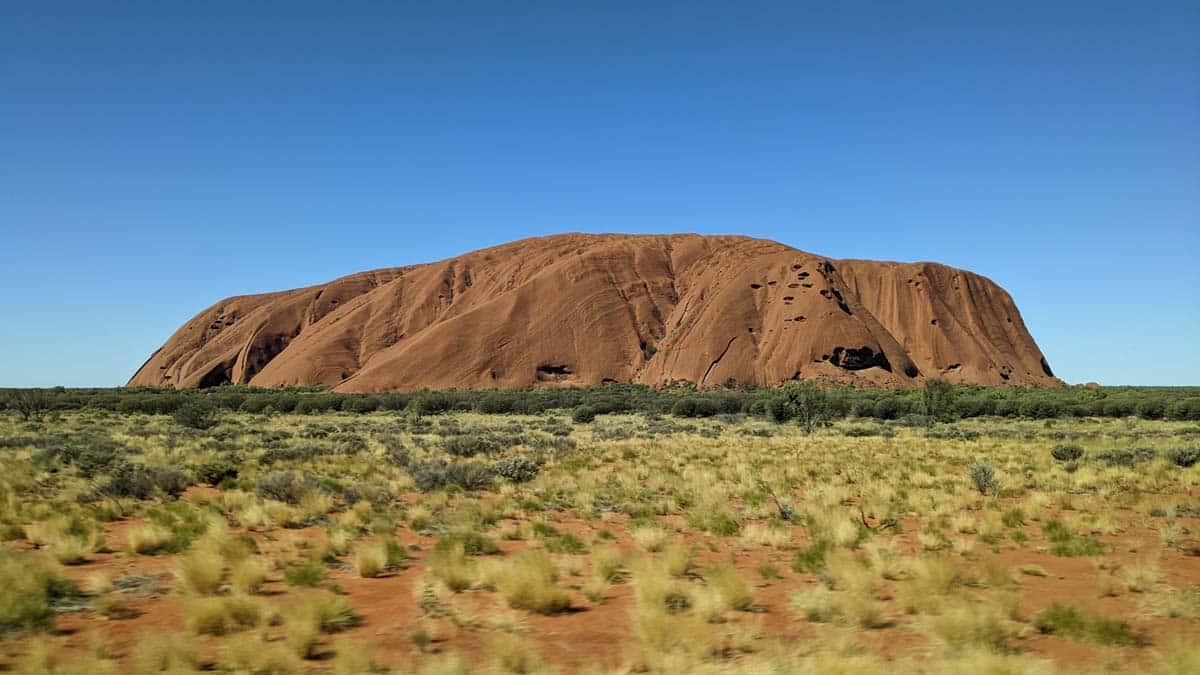My husband and I recently travelled to the Northern Territory to visit Uluru, the spiritual heart of Australia. Here are some scenes from our visit to Uluru and a few tips for you.
Our four-day mini-holiday to Uluru began with many hiccups from both Qantas and Jetstar. There were multiple cancellations and delays. We all know flying can be challenging, so I won’t bore you with all those details, but this leads to my first tip.
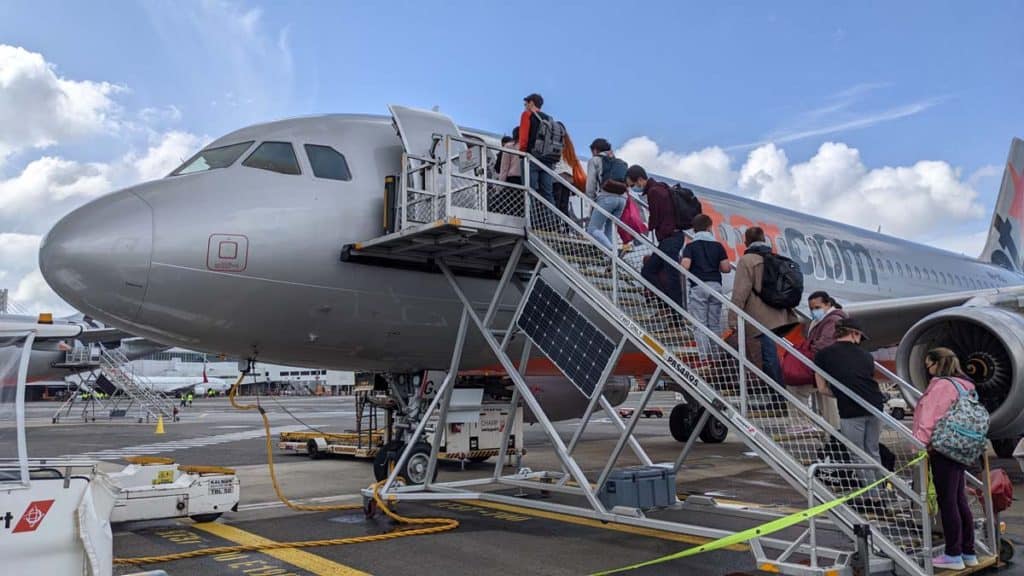
Tip #1: Avoid scheduling significant activities on your travel days.
Jetstar needed to bump 15-20 people from the flight to accommodate the weight of more fuel. The airline offered a $300 voucher, overnight accommodations in Sydney, and a flight the following day to volunteers. The problem is that Uluru is a pricey travel destination, and activities such as sunrise helicopter rides and sunset dinners fill up weeks ahead. The airline’s offer might not make up for it, and if enough people don’t volunteer, you could get randomly chosen and bumped. Luckily, that didn’t happen to us.
Tip #2: Book ahead.
In case you missed it, my second tip is to book ahead. There is only one resort. Many activities take place only in the morning to beat the heat, so they’re limited and take few people. A helicopter only carries five or six people, and a camel excursion is about 20. A sunset dinner accommodates about 70. Book your hotel and experiences ahead of time online.
After a very long morning, we finally arrived in the Northern Territory. As the name suggests, the Northern Territory (NT) is not a state but an internal Australian territory. The difference between an Australian state and territory lies in its governing powers. Unlike a state, a territory doesn’t have a legislature to make laws for itself; the federal government makes laws for territories. About 250k people reside in the massive NT, and Indigenous Australians own approximately 49% of the land.
Uluru is in Yulara, an unincorporated town in the southern region of NT. At the 2016 census, Yulara had a permanent population of 1,099, but I suspect it is smaller now. The pandemic hit Yulara hard. One Uluru Hop On Hop Off coach driver said they’re not operating at full capacity due to staff shortages. A resort employee told me that the only bank, ANZ, closed its branch. Choice reported that there were 575 bank-branch closures outside metropolitan areas between June 2017 and June 2021.
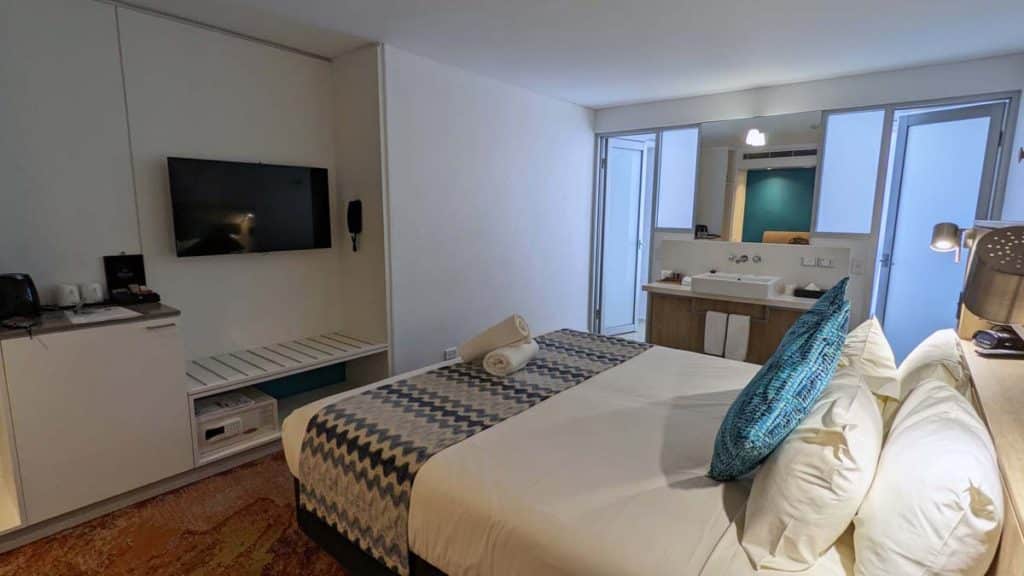
Tip #3: You don’t need a lot of cash.
This leads to my next tip. You don’t need to bring much cash. The only business that accepts cash is IGA, the only supermarket in Yulara. The only other person I saw that took money was an Aboriginal artist. In that case, you should take quite a bit of cash, but there’s also an ATM.
On arriving at the small Ayers Rock Airport, a hotel coach took us to Yulara, which is, for marketing reasons, better known as Ayers Rock Resort. It offers seven different kinds of accommodations ranging from luxury rooms to hotel apartments, glamping and rustic camping, restaurants, bars, shops, galleries, and so forth. It’s also a town and home to all the people that support tourism around Uluru. There’s a little town square with a post office and that one supermarket. There’s also one petrol station. A complimentary shuttle takes you around the resort. Employees have their accommodations and amenities.
My husband and I stayed at The Lost Camel, a “contemporary and fun, boutique-style hotel”. It’s one of the more affordable options, and the rooms are small, but we liked it. It was cute and comfortable, and we appreciated that it was next to the Resort Town Square. We spent the late afternoon settling in, unpacking, and making plans before having dinner and crashing early.
Tip #4: Buy your park tickets online ahead of time.
The next day, we went to Uluru-Kata Tjuta National Park. The Anangu people own the land and lease it to Parks Australia, which manages it. Here’s another tip: buy your park tickets online before your travel.
If you’re driving to the park, you can buy a ticket at the gate. If you’re getting to the park another way, such as a tour bus, you’ll need to have your park ticket and show it when you hop on. There are signs with a QR code you can scan throughout the resort to get your tickets online, which is what we did. We purchased a transfer on the Uluru Hop On Hop Off to get to and from the park.
The park is home to Uluru and Kata Tjuta, a group of large, domed rock formations. You can see it in the distance, but we did not visit Kata Tjuta.
I’d already seen Uluru from a distance as we flew in and drove to the resort, but I was moved as we approached it. It really is very beautiful.
Uluru
Uluru is a large sandstone formation, a World Heritage site, one of the most recognisable landmarks in Australia, and one of the most important indigenous sites in the country. It stands 348 m (1,142 ft) high, with most of its bulk lying underground and has a total perimeter of 9.4 km (5.8 mi).
I can’t adequately describe Uluru. For the Anangu people, Uluru is evidence of the creation ancestors, and their stories are visible across the rock. These stories are passed down from generation to generation and are the foundation for belief systems and kinship. It’s beautiful from a distance and remarkable when you get up close.
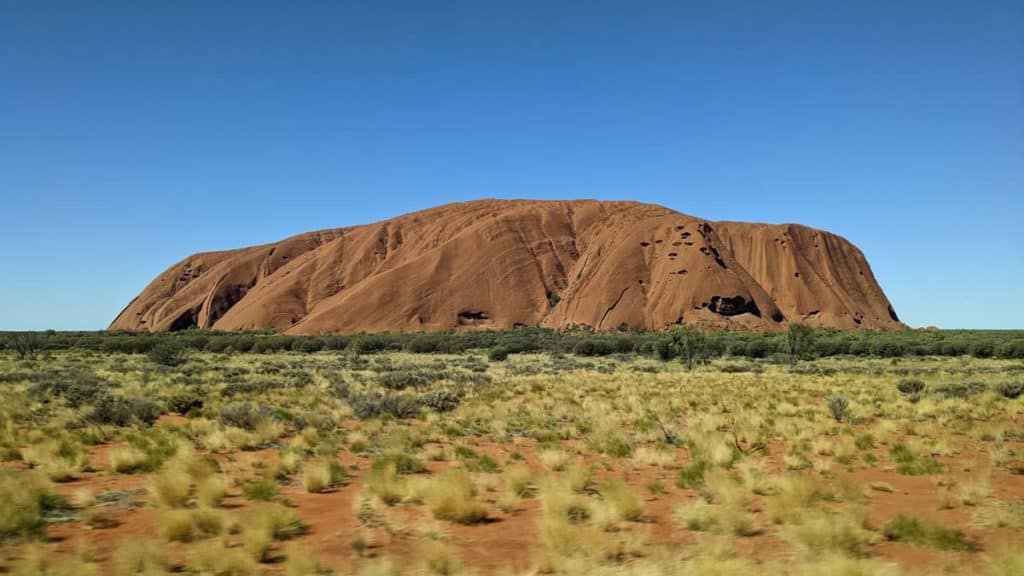

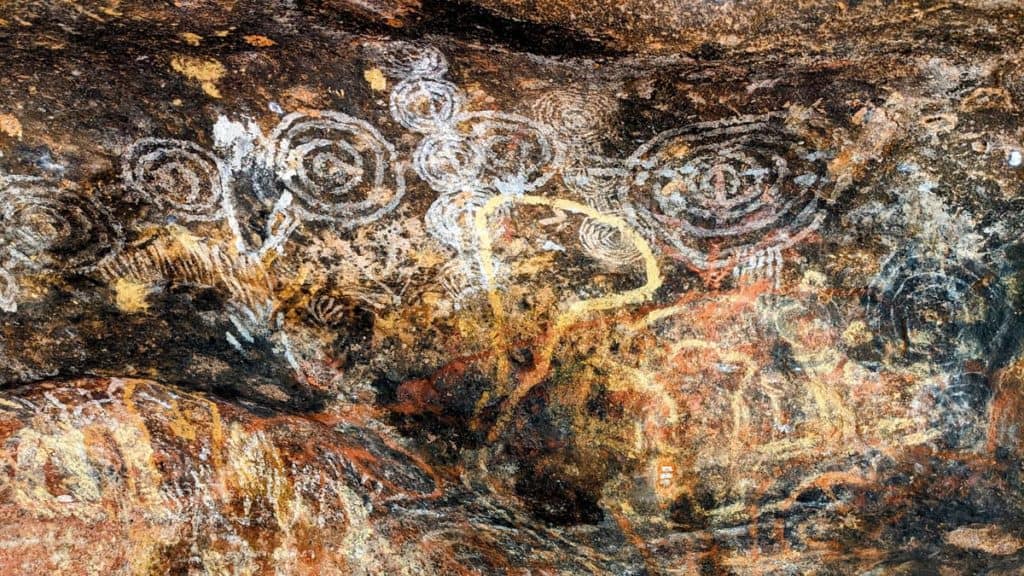

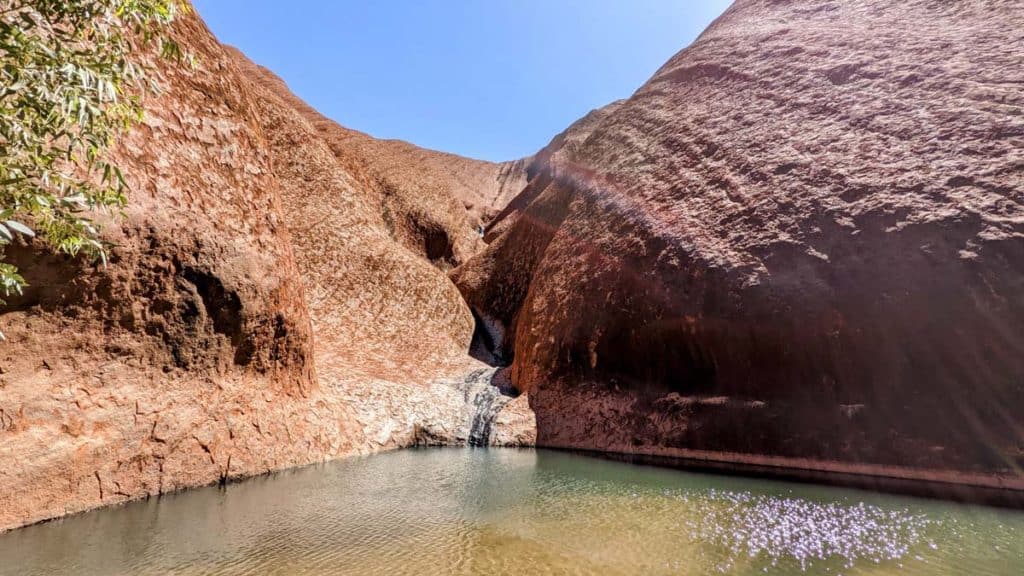
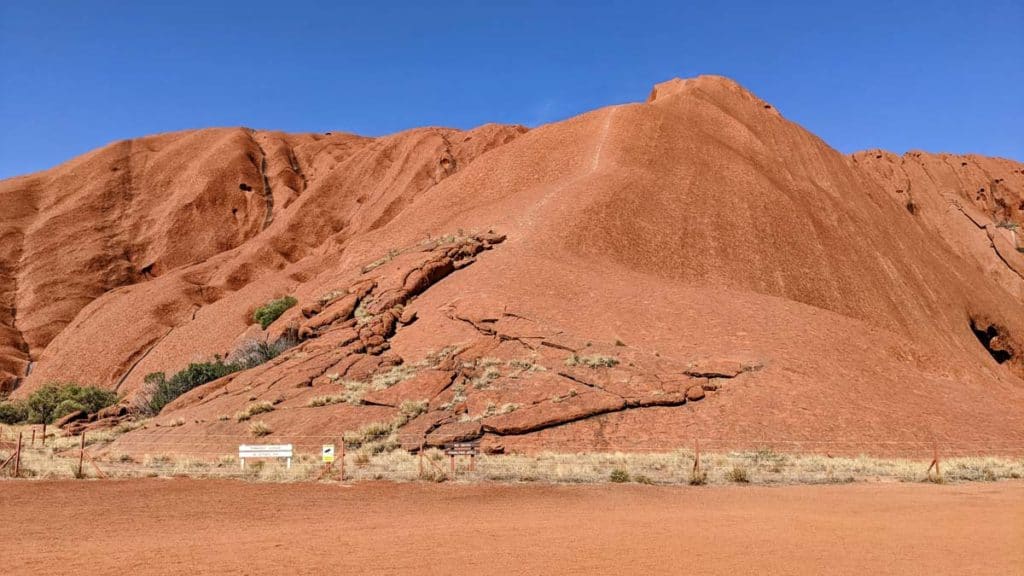
Due to Uluru’s spiritual and cultural significance, the Anangu request that visitors don’t photograph or film certain sections of the site. For example, Pulari is a women’s site, and the photographic restriction prevents men from inadvertently violating a taboo by encountering photos of it online. Climbing Uluru has been prohibited since 2019; the climbing trail is still visible.
Tip #5: Dress appropriately and carry plenty of water.
As with any hiking, I suggest appropriate clothing, good socks and shoes, a hat, sunblock, and plenty of water. Most tours wrap up by 11 am because of the heat, but it’s not so hot this time of year. It was pleasantly breezy when we were there, and there were few flies, but I’ve heard they can get bad during certain months; you can purchase a fly net at the shops in the Resort Town Square.
There are many tours available, but we didn’t purchase one. The trails are well marked, and there are information signs. We saw only a few people, and I appreciated the silence and solitude.
That evening, my husband and I dined at Ilkari, which offers a delicious, international buffet dinner with added Indigenous flavours. I enjoyed a divine Outback Margarita and ate foods I’d never eaten before, such as emu and buffalo. I’m not usually a fan of buffets, and this was a notable exception.
Tip #6: Uluru-Kata Tjuta can be an expensive holiday.
That’s more of a warning than a tip. Uluru is remote, and there’s no competition regarding accommodations or dining. We met a young couple driving across Australia in their van, which they were also sleeping in, and they brought their food. Camping may be one of the most affordable ways to visit Uluru. You can also save with your tours and experiences, but we won’t be back in Uluru for years, so we decided to splurge a little.
On day three, we were up bright and early-ish for a morning helicopter ride with Professional Helicopter Services. I’d never been in a helicopter before, which was exciting and fun. The staff was friendly and accommodating. I enjoyed the aerial view, and it gave me a better sense of how remote Uluru is. It was also the only time we saw the Anangu community near the rock. I don’t know if helicopters and small planes are allowed to fly over Uluru, but ours didn’t.

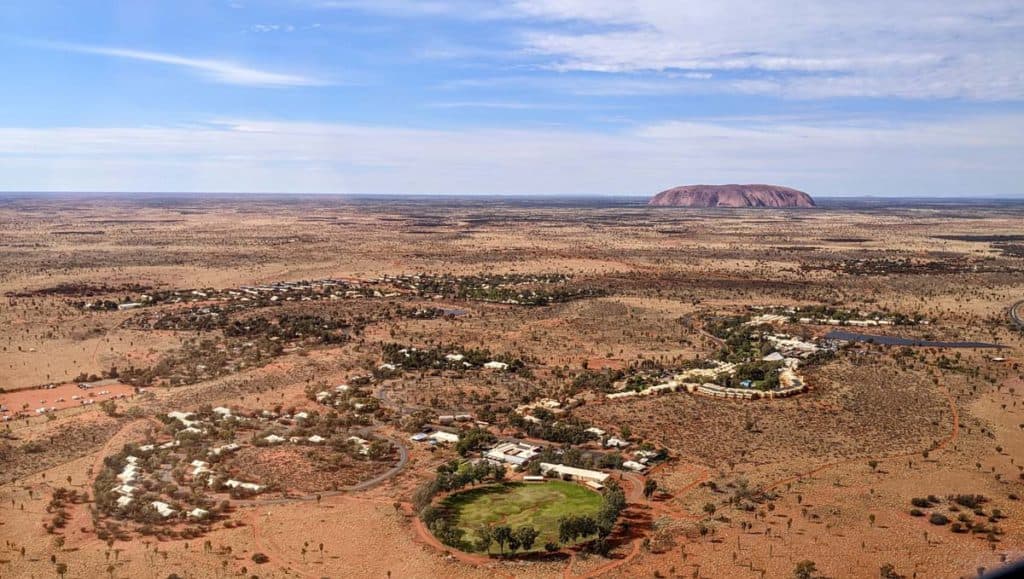
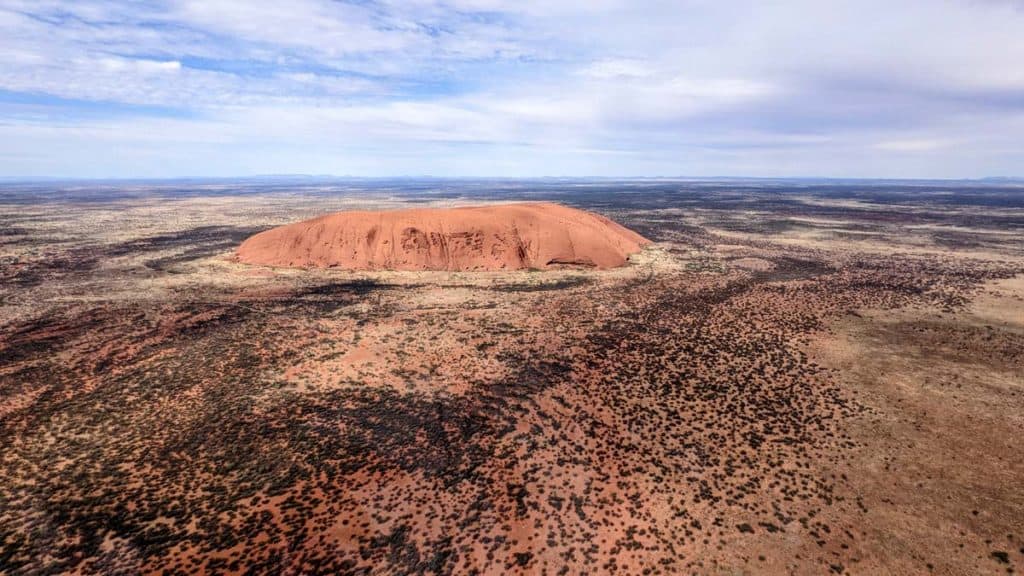
That afternoon, my husband went on the Camel Express, a 45-minute ride through the desert with Uluru and Kata Tjuta in the background. Camels were introduced to Australia in 1840 for transport and construction of the central and western parts of the country. There are now over a million feral camels in Australia. The camels at Uluru Camel Tours are “rescued from the wild”.
In the evening, we attended a dinner event called A Night at Field of Light. A coach picked us up and took us to a platform on a dune to watch the sunset across Uluru over drinks and canapes. One of the notable features of Uluru is how it appears to change colour at different times of the day.

After the viewing, we were escorted to an outdoor dining area. We sat with six other couples and had a lot of fun getting to know them and sharing stories and photos. We enjoyed a three-course meal, another buffet with “bush tucker flavours”. Again, the food was very good.
The lights were turned out between the main meal and dessert, and we listened to a guide tell us about the night sky over Uluru. It was cloudy, and it wasn’t possible to see everything he pointed to, but it was still pleasant. I didn’t know that in most Aboriginal cultures, the sun is female, and the moon is a naughty boy or man that fattens and thins as he eats.
After dinner, we walked through the Field of Light, a large light installation created by British artist Bruce Munro. The lights are solar-powered and change colours slowly. I was sceptical about this, but it was very pretty. Still, I wonder how the Aboriginal residents feel about it.
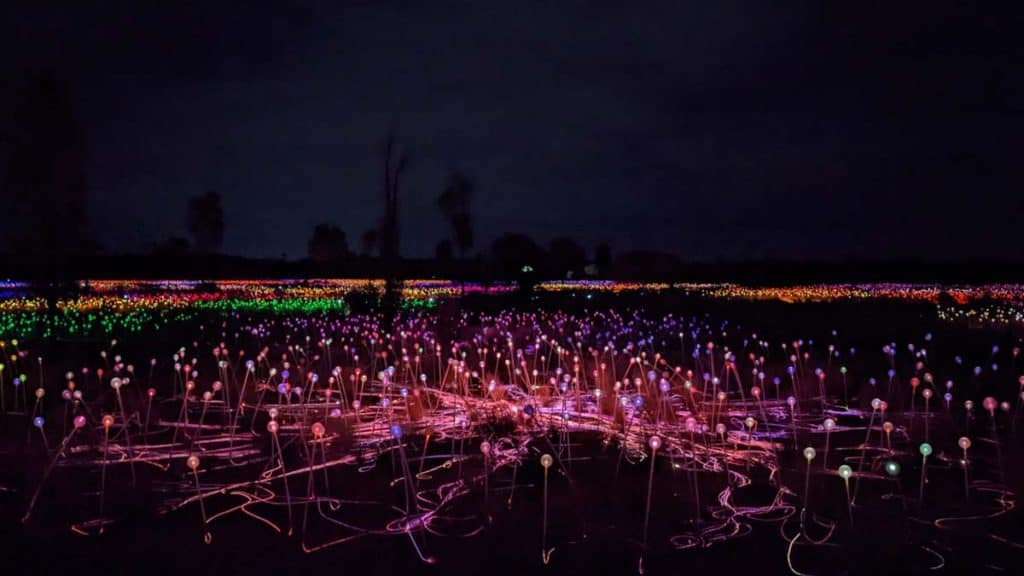
The following day, it was time to go home. My husband and I agreed it was our first visit to NT, not our only trip. There’s a lot more to see. In the future, we’d like to visit Kata Tjuta, Kings Canyon, Kakadu National Park, Litchfield National Park, and Alice Springs.

